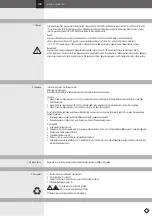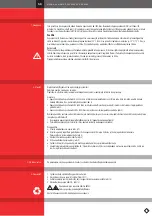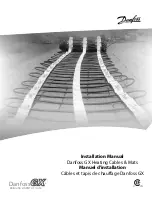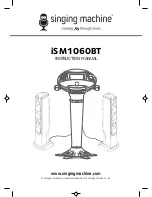
4
1. General
This manual is for Flexcon expansion vessels with a capacity of 2 to 1000 litres. The package includes an expansion
vessel (A) with label (B), a manual (C) and an installation kit (D) (fig. 1). See the label for the maximum working pressure
and the pre-charge. Flexcon expansion vessels are pressure equipment, and conform to Pressure Equipment Directive 97/23/EC.
A conformity declaration can be obtained from Flamco.
Application
Flexcon expansion vessels are intended solely for use in closed central heating and cooling systems (using additives based
on up to max. 50% glycol) with a maximum supply temperature of 120 °C. Min. / max. permissible temperature on the
membrane is –10 °C / 70 °C. See the label for the maximum permissible working pressure. Refer to the Flamco
documentation to calculate the capacity and pre-charge.
Safety
The expansion vessel comes pre-charged. Damage may result in serious injuries. The bracket must be able to carry the
weight of a full expansion vessel. Prevent overpressure in the installation. Install a safety valve (for example Prescor).
Set the opening pressure of the safety valve to a value that is equal to or lower than the maximum working pressure shown
on the label. The connection between the expansion vessel and the boiler must always be open.
2. Installation
The installation must be carried out by approved personnel only.
Observe local regulations and guidelines.
Flush the installation before installing the vessel (never via the safety valve) and check the installation by examining it for leaks.
Fitting
• Expansion vessels with a capacity of between 2 and 25 litres are installed suspended from the water nipple (E).
Use an MB 2 wall bracket or Flexconsole, as appropriate. (fig. 2)
• Expansion vessels with a capacity of between 35 and 80 litres are installed either with the water nipple (E) pointing
down, or standing on the floor. (fig. 3)
• Expansion vessels with a capacity of between 100 and 1000 litres are installed standing on the floor. (fig. 4)
Install the vessel in the return line, as close as possible to the boiler, on the intake side of the pump. Install the vessel so
that the water it contains cannot circulate.
1. Put Teflon tape (G) (do not use hemp!) on the expansion vessel connection. (fig. 5)
2. Screw the expansion vessel to the installation (Flexconsole, T-piece or expansion pipe)
First use
a. Open the bleed points. (fig. 6, 7)
b. Fill the installation slowly until the fill pressure in the expansion vessel is 0.2 bar higher than the pre-charge. Bleed the
system during filling. (fig. 8)
c. Bleed the pipe to the expansion vessel. (fig. 8)
d. Close the bleed points. (fig. 9)
e. Heat the system as high as possible for half a day and bleed regularly.
f. When the water temperature has fallen to approx. 50 °C, top up the installation to 0.5 bar above the pre-charge of the
expansion vessel. Ensure that the filling hose is bled.
3. Maintenance and service
It is recommended that the expansion vessel is checked annually by approved personnel.
4. De-installation
1. Allow the installation to cool down and release the pressure from it.
2. Remove the cover cap (H) and the plug (I). (fig. 10, 11)
3. Push the inner valve (J) in to drain the pressure from the expansion vessel. (fig. 12)
4. Unscrew the expansion vessel (A). (fig. 13)
Caution: a full expansion vessel is heavy!
The water in the expansion vessel may be hot.
Observe the local regulations when you dispose of the expansion vessel.
GB
I N S TA L L AT I O N A N D O P E R AT I N G I N S T R U C T I O N S




































